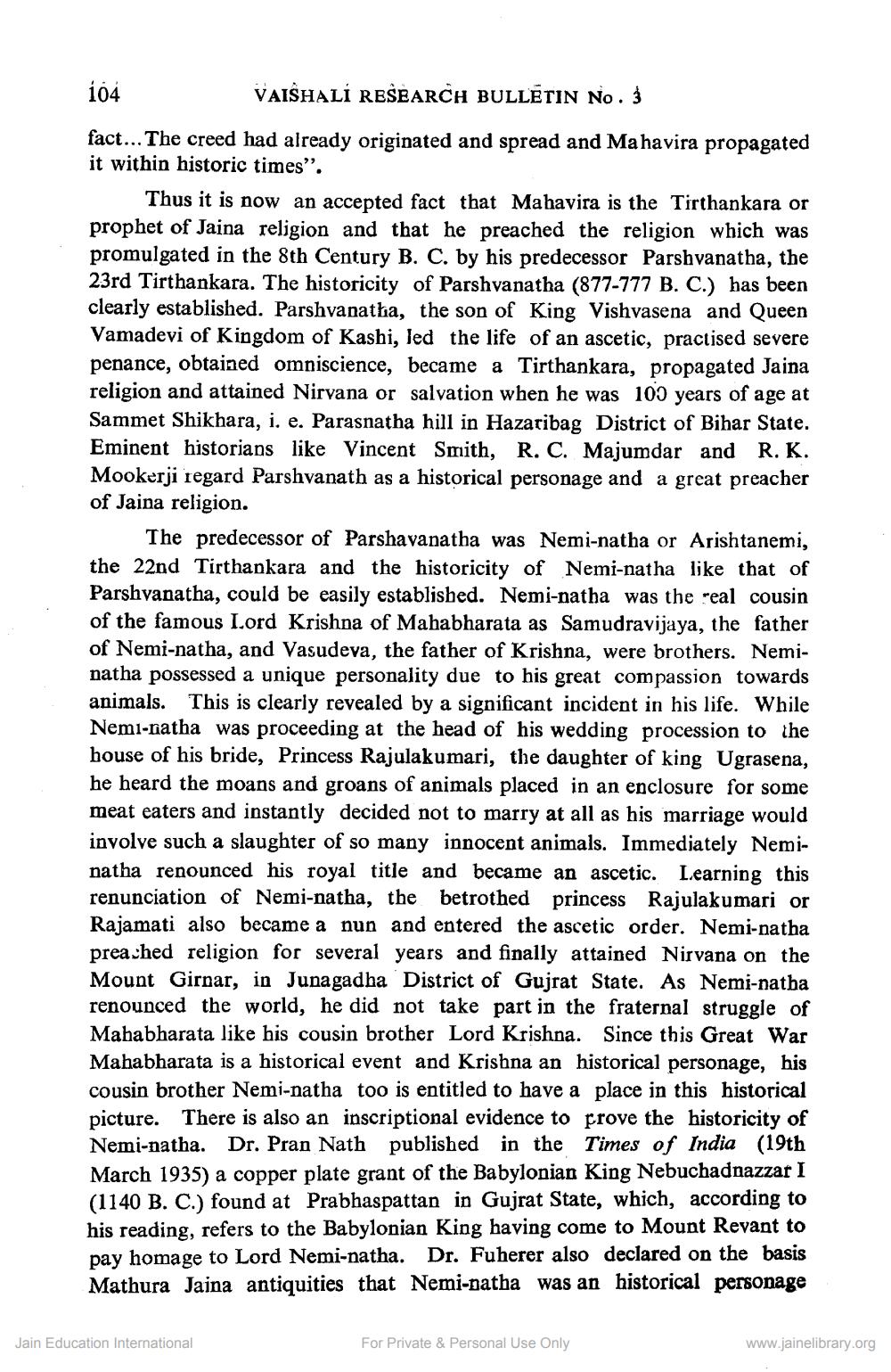________________
104
VAISHALI RESEARCH BULLETIN No. 3
fact... The creed had already originated and spread and Mahavira propagated it within historic times".
Thus it is now an accepted fact that Mahavira is the Tirthankara or prophet of Jaina religion and that he preached the religion which was promulgated in the 8th Century B. C. by his predecessor Parshvanatha, the 23rd Tirthankara. The historicity of Parshvanatha (877-777 B. C.) has been clearly established. Parshvanatha, the son of King Vishvasena and Queen Vamadevi of Kingdom of Kashi, led the life of an ascetic, practised severe penance, obtained omniscience, became a Tirthankara, propagated Jaina religion and attained Nirvana or salvation when he was 100 years of age at Sammet Shikhara, i. e. Parasnatha hill in Hazaribag District of Bihar State. Eminent historians like Vincent Smith, R. C. Majumdar and R. K. Mookerji regard Parshvanath as a historical personage and a great preacher of Jaina religion.
The predecessor of Parshavanatha was Nemi-natha or Arishtanemi, the 22nd Tirthankara and the historicity of Nemi-natha like that of Parshvanatha, could be easily established. Nemi-natha was the real cousin of the famous Lord Krishna of Mahabharata as Samudravijaya, the father of Nemi-natha, and Vasudeva, the father of Krishna, were brothers. Neminatha possessed a unique personality due to his great compassion towards animals. This is clearly revealed by a significant incident in his life. While Nemi-natha was proceeding at the head of his wedding procession to the house of his bride, Princess Rajulakumari, the daughter of king Ugrasena, he heard the moans and groans of animals placed in an enclosure for some meat eaters and instantly decided not to marry at all as his marriage would involve such a slaughter of so many innocent animals. Immediately Neminatha renounced his royal title and became an ascetic. Learning this renunciation of Nemi-natha, the betrothed princess Rajulakumari or Rajamati also became a nun and entered the ascetic order. Nemi-natha preached religion for several years and finally attained Nirvana on the Mount Girnar, in Junagadha District of Gujrat State. As Nemi-natha renounced the world, he did not take part in the fraternal struggle of Mahabharata like his cousin brother Lord Krishna. Since this Great War Mahabharata is a historical event and Krishna an historical personage, his cousin brother Nemi-natha too is entitled to have a place in this historical picture. There is also an inscriptional evidence to prove the historicity of Nemi-natha. Dr. Pran Nath published in the Times of India (19th March 1935) a copper plate grant of the Babylonian King Nebuchadnazzar I (1140 B. C.) found at Prabhaspattan in Gujrat State, which, according to his reading, refers to the Babylonian King having come to Mount Revant to pay homage to Lord Nemi-natha. Dr. Fuherer also declared on the basis Mathura Jaina antiquities that Nemi-natha was an historical personage
Jain Education International
For Private & Personal Use Only
www.jainelibrary.org




